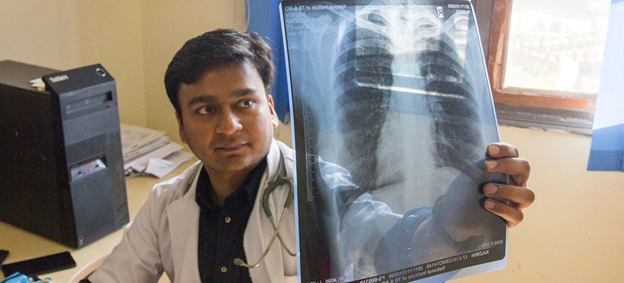PRETORIA, South Africa, May 08 (IPS) – This week, the United Nations will host two days (May 8-9) of preliminary talks to plan a larger conference on tuberculosis (TB) in September. These preliminary talks will be held in New York City, the epicenter of the last significant surge of TB cases in the United States (U.S.) thirty years ago.
TB is a disease that strikes hardest in impoverished places, and the last U.S. outbreak was no different. Disadvantaged urban communities hit hard by the HIV/AIDS pandemic bore the brunt of the outbreak.
Yet, at the outbreak’s peak in 1992, less than 27,000 people in the U.S. were infected with TB. Today, an estimated 304,000 people are infected with TB in South Africa every year, while just under 3,000,000 people are infected with TB in India. The scope of the disease today far exceeds what the U.S. saw three decades ago, much less what it sees now.
TB deaths have risen across the world for two consecutive years; at this point it kills more people than COVID-19. Globally, an estimated 10.6 million people were infected with TB, but only 6.4 million people were diagnosed. The other 4.2 million people infected with this potentially lethal and debilitating disease slipped through the cracks.
In 2018, the UN held the first high-level meeting on TB. More than half of the UN member states sent delegations and 15 heads of state spoke at the event.
In a resolution endorsed by the entire UN General Assembly, every nation pledged to invest, by 2022, a total of US$2 billion annually for TB research and US$13 billion annually for TB diagnostics, treatment and care. Other commitments—to treat more people and prevent more active disease—were also made.
The world got off to a slow start on meeting these pledges and then the pandemic hit. Many of the goals were not reached. We were delighted, for example, that the annual research budget for TB research finally reached US$1 billion in 2021, because it was a critically important achievement—but the actual goal was twice that amount.
And less than half of what was pledged annually on diagnostics, treatment and prevention—US$5.4 billion—was actually provided in 2021.
There are bright spots in the fight against TB, of course. Sub-Saharan Africa is the only region that did not suffer a significant slump in TB detection during the COVID-19 pandemic. But with just under 40% of active TB infections unidentified, it still lags behind much of the world in diagnosing active cases.
Another recent highlight is the approval of new drug-resistant TB treatments that can reduce treatment time from as much as a year and a half (or sometimes even longer) to six months—including one developed by my organization, TB Alliance. African nations like Nigeria and South Africa are taking steps to rolling out this new regimen so that the spread of drug resistant infections can be curbed.
The goal pledged at the 2018 UN meeting was that, between 2018 and 2022, 1.5 million people with drug-resistant TB (DR-TB) would be treated—this is a critical slice of the TB caseload. Yet only 649,000 DR-TB patients were treated between 2018 and 2021.
There is optimism that the number of DR-TB patients who can be treated will escalate, given the new treatments, but funding and resources must increase.
The bottom line is this: TB was the most lethal infectious disease before the COVID-19 pandemic, and as COVID recedes, it is once again the worst. As leaders prepare to meet in New York City and start drafting a new set of promises in the form of the next Political Declaration on TB, we need the world to commit to ending this disease, which has killed too many people for far too long.
But this time around, we also need the world to follow through on its commitments.
Morounfolu (Folu) Olugbosi, M.D. is the Senior Director, Clinical Development at TB Alliance. He works with the clinical development of products in the TB Alliance portfolio and helps to oversee clinical trials in TB endemic countries and heads the South Africa office.
IPS UN Bureau
Follow @IPSNewsUNBureau
Follow IPS News UN Bureau on Instagram
© Inter Press Service (2023) — All Rights ReservedOriginal source: Inter Press Service
Check out our Latest News and Follow us at Facebook
Original Source

